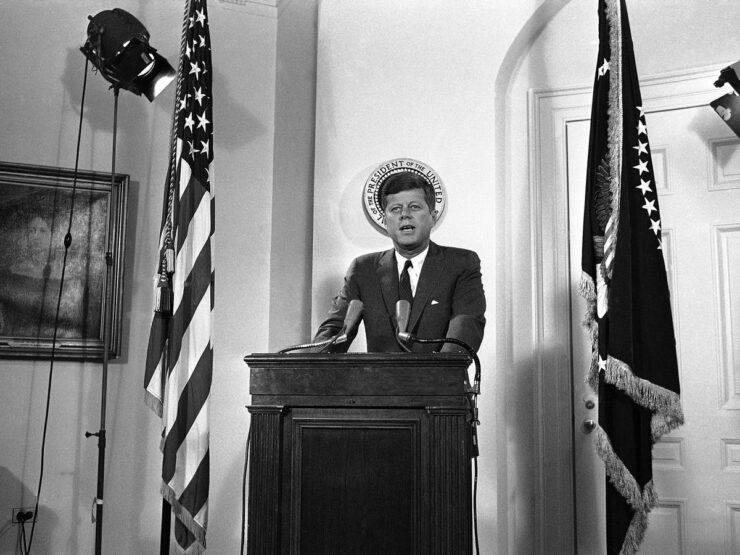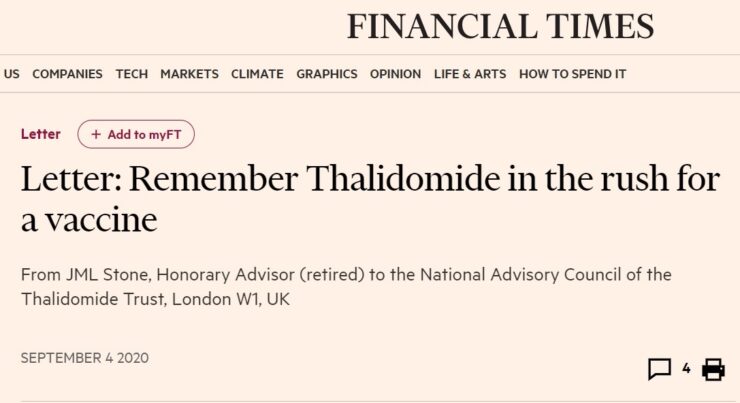Blog
Why comparisons between the corona vaccine and thalidomide do not hold: a historical take on public health scandals and the regulation of drug safety in Europe
As tests for several vaccines against the corona virus enter their final stages, sceptics raise concerns about the vaccine’s safety. They argue that the unprecedented speed with which the vaccines have been developed and the commercial interests that are at stake may come with risks to public health. In this context, one historical scandal continues to impact public trust in the safety of medicines: the thalidomide scandal of the 1950s and 1960s. As Koen van Zon shows in this blog, however, the fact that we keep coming back to this scandal of more than half a century back shows that the regulation of drug safety has profoundly changed since.

Still from the German movie ‘Contergan’ from 2007
The thalidomide disaster
Thalidomide was introduced in the late 1950s as a drug for pregnant women, meant to treat insomnia and morning sickness during the early stages of pregnancy. It was presented as a safe alternative to other sleeping drugs because overdosing was almost impossible and there were few side-effects. By the early 1960s, however, it was becoming clear that thalidomide had disastrous effects on unborn children. It affected the development of their hands, feet, arms and legs and even their internal organs. Many of these babies died soon after birth or became disabled for life. It took some time before these defects were linked to thalidomide. By then, some 10,000 so-called thalidomide children had been born all over the world.
Thalidomide was perhaps the first pan-European public health scandal. First introduced in West Germany as Contergan, it was soon sold across European countries (as Softenon in the Netherlands, for example). The thalidomide scandal sparked public outrage throughout Europe and beyond. In the wake of the scandal, distrust in the pharmaceutical industry and medical expertise grew, and the health and safety of consumers became an increasingly politicised subject. In that context, the “thalidomide children” grew up as living evidence of failing mechanisms of guaranteeing health and safety.
“In many European countries, the pharmaceutical industry itself was responsible for guaranteeing the safety of medicines”
Regulating medicine safety
The thalidomide disaster made clear that governments had a stronger role to play in guaranteeing the safety of medicines. West Germany, the country hit hardest with 4,000 to 5,000 cases, had a system in place where the pharmaceutical market was predominantly controlled by physicians, pharmacists and health insurers. Likewise, in many other European countries, the pharmaceutical industry itself was responsible for guaranteeing the safety of medicines.
Only in the United States, a federal authority existed (the Food and Drug Authority, FDA) which, in the wake of the thalidomide scandal, was given powers to oversee the pharmaceutical industry. It was part of an effort on the part of president Kennedy to strengthen the protection of consumers. In a 1962 speech, Kennedy illustrated the problem of consumer protection and drug regulation specifically: “Ninety percent of the prescriptions written today are for drugs that were unknown 20 years ago. Many of the new products used every day in the home are highly complex. The housewife is called upon to be an amateur electrician, mechanic, chemist, toxicologist, dietitian, and mathematician – but she is rarely furnished the information she needs to perform these tasks proficiently.” At a time when the maintenance and wellbeing of the family were still thought to be the exclusive domain of women, Kennedy’s reference to the housewife served to illustrate that the government, not consumers, should guarantee the safety of the food, medicines and products they bought.

US president Kennedy pioneered consumer protection in 1962
A European approach to drug approval
From the 1960s onward, governments thus increasingly stepped up to guarantee the health and safety of consumers, following the American example. In Europe, this task was also gradually taken up by the European Economic Community (EEC). In 1965, the Community adopted a regulation which stipulated that a drug could only be allowed onto the market if a national authority had approved that specific drug.
The tightening of European legislation on the safety of medicines was part of the EEC’s aim to establish a European market for pharmaceuticals. While this process was primarily driven by commercial motivations, commerce and protection went hand in hand. After all, a European market for pharmaceuticals would only function if consumers could trust medicines on the European market to be safe, and so another thalidomide crisis had to be avoided at all cost.

Letter published in the Financial Times, warning against rushing the introduction of a corona vaccine
The EMA and the response to the corona pandemic
As a part of this development, the EU established the European Medicines Agency (EMA) in London in 1995. Before, national agencies in member states had been overly protective of their own markets, and sometimes refused to admit medicines from other countries even if they were safe by their own standards. The EMA was a response to this ‘regulatory competition’. It comes up with scientific evaluations of the safety and efficacy of medicines, on the basis of which the European Commission decides on the admission of drugs to the European market. EMA and national authorities also oversee the safety and efficacy of drugs currently on the market. Since the Brexit vote, the EMA has moved from London to Amsterdam.
In response to the corona pandemic, the European Commission recently announced that it will be buying hundreds of millions of doses of the different vaccines currently in development. That way, the Commission ensures that the member states do not end up in competition with each other over acquiring vaccines, and that access to vaccines is evenly distributed across the EU. Meanwhile, the producers of the vaccines have to comply with the European standards for clinical trials, which are observed by the EMA. Once these trials are completed, the EMA will also evaluate the results of these trials and follow its regular procedure for approving vaccines.
“It is only when scandals break out that we start questioning the mechanisms by which we safeguard our health and safety”
Thalidomide and corona
The thalidomide disaster has shaped the regulation of medicine safety as we know it in Europe today. As our research project makes clear, it was often after large-scale disasters that Europe-wide safety measures were taken. The hormone scandal in the 1970s, for example, led to a European ban on growth hormones in beef. The BSE crisis of the 1990s led to the establishment of the European Food Safety Authority in 2002. And similarly, the thalidomide disaster has remained the worst case scenario in regulating medicine safety ever since.
The difference with the 1960s is that the self-regulation of the pharmaceutical industry has since made place for government regulation. This means that in the current pandemic, distrust in the safety and efficacy of vaccines not just concerns the pharmaceutical industry, but public authorities as well. The irony in this respect is that the successes in protecting public health have, by their very nature, largely gone unnoticed. This is true both for vaccines and for the institutions that regulate their safety. It is only when scandals break out that we start questioning the mechanisms by which we safeguard our health and safety. That is not to say that the pharmaceutical industry is free from scandals and questionable practices, far from it. But the fact that we keep coming back to the thalidomide crisis sixty years on, tragic as it was, is probably a good sign rather than a cause for concern.

